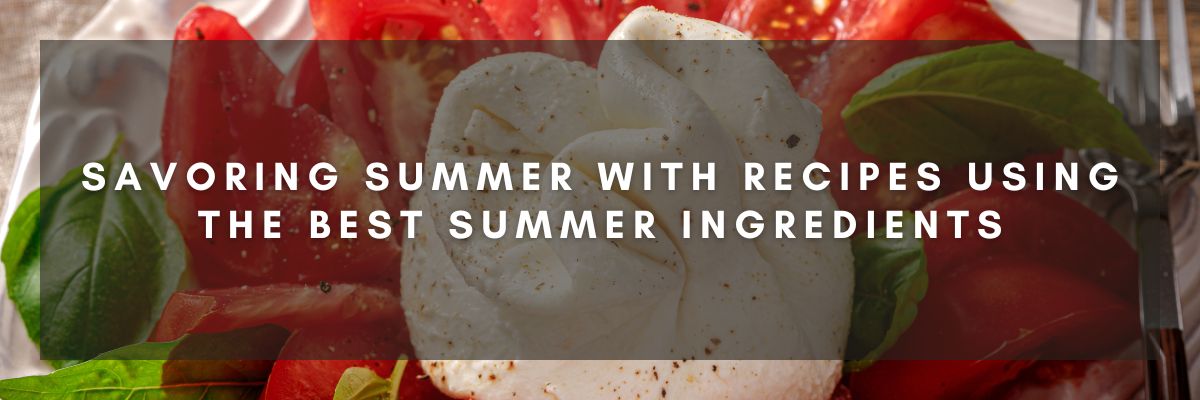- Millennium Wellness175 East Main Street
Cedaredge, CO 81413970-856-4729 -
Latest Articles:
- • Add These 10 Immune-Boosting Foods to Your Fall Diet •
- • Keep Your Skin Healthy and Glowing with these Fall Skincare Tips •
- • Beat End of Year Burnout with these Fall Self-Care Rituals •
Health WellNews
Add These 10 Immune-Boosting Foods to Your Fall Diet

As the leaves change color and temperatures drop, fall brings with it the start of cold and flu season. Supporting your immune system with nutrient-rich foods is one of the best ways to stay healthy during this transitional time. Fortunately, autumn’s bounty offers a wide variety of foods that not only taste great but also enhance immune function. Here are ten immune-boosting foods to incorporate into your fall diet:
Pumpkin
Rich in beta-carotene, which the body converts into vitamin A, pumpkin helps strengthen the immune system and supports healthy skin and eyes. Add pumpkin puree to soups, oatmeal, or smoothies for a nutritional boost. Pumpkin seeds, or pepitas, are also a great source of zinc and healthy fats, further supporting immune health.
Sweet Potatoes
Similar to pumpkin, sweet potatoes are high in beta-carotene and fiber. They help support gut health, which is closely linked to immunity. Roasted sweet potatoes make a delicious side dish or salad topper. Try mashing them with a bit of cinnamon and nutmeg for a warming, comforting dish.
Apples
The old adage “an apple a day keeps the doctor away” has merit. Apples are rich in antioxidants, particularly quercetin, which can help regulate the immune response and reduce inflammation. Eating apples with the skin on provides additional fiber and polyphenols that support a healthy gut microbiome.
Garlic
Garlic is well-known for its immune-boosting properties. It contains allicin, a compound with antimicrobial properties. Adding fresh garlic to your meals can help your body fight off infections. Raw garlic, when chopped and allowed to sit for 10 minutes before use, offers the most potent health benefits.
Ginger
Ginger has powerful anti-inflammatory and antioxidant effects. It’s known to combat nausea and may help prevent illness. Enjoy it in tea, soups, or stir-fries. Ginger can also aid digestion and circulation, making it a perfect addition to your fall wellness routine.
Cranberries
These tart berries are packed with vitamin C and other antioxidants. They help protect cells from damage and support a healthy urinary tract, which plays a role in overall immune function. Choose unsweetened cranberries or make your own cranberry sauce using natural sweeteners like maple syrup or honey.
Brussels Sprouts
A cruciferous vegetable high in vitamins C and K, Brussels sprouts also contain antioxidants that help protect against cellular damage. Try roasting them with olive oil and a touch of balsamic glaze. They’re also high in fiber and contain compounds that support liver detoxification.
Mushrooms
Certain mushrooms, like shiitake and maitake, contain beta-glucans and other compounds that enhance immune activity. Sauté them or add to soups and stews. Mushrooms are also a source of vitamin D, especially if they’re exposed to sunlight during growth, which helps modulate the immune system.
Carrots
Carrots are another great source of beta-carotene and fiber. They’re easy to include in both sweet and savory dishes, such as roasted veggie medleys or baked goods. Carrots also support eye health and contribute to a glowing complexion during the dry fall months.
Pomegranates
These jewel-toned fruits are rich in antioxidants and vitamin C. Their anti-inflammatory properties support heart and immune health. Enjoy the seeds on salads, yogurt, or simply by the handful. Pomegranate juice is also a refreshing and healthful drink option, but opt for unsweetened varieties.
Bonus Tips to Maximize Immune Support Through Diet
- Diversify Your Plate: Incorporating a wide range of colors and foods increases the variety of nutrients and antioxidants your body receives. The more diversity in your meals, the better your immune system will be equipped to respond to invaders.
- Stay Hydrated: Drinking enough water is essential for every function in the body, including immune responses. Herbal teas, broths, and water-rich fruits and vegetables can contribute to your fluid intake.
- Use Spices Liberally: Fall spices like turmeric, cinnamon, and cloves have their own immune-supportive properties. Turmeric is known for its anti-inflammatory effects, especially when paired with black pepper to enhance absorption.
- Probiotics and Fermented Foods: Your gut is home to a large portion of your immune cells. Eating fermented foods like yogurt, kefir, sauerkraut, and miso helps populate your gut with beneficial bacteria that support immune regulation and pathogen defense.
- Cook at Home When Possible: Preparing meals at home allows you to use whole, unprocessed ingredients and avoid excess sugar and preservatives, which can negatively impact immune function. Batch-cooking soups and stews with several of the foods mentioned above can be a simple way to eat nutritiously all week long.
Sample Fall Meal Plan for Immune Support
- Breakfast: Pumpkin oatmeal topped with pomegranate seeds and a sprinkle of cinnamon.
- Lunch: Roasted sweet potato and Brussels sprout bowl with quinoa, garlic tahini dressing, and sautéed mushrooms.
- Snack: Apple slices with almond butter and a few raw carrot sticks.
- Dinner: Ginger-garlic lentil soup with a side of cranberry kale salad.
- Dessert: Baked apples with a touch of honey, cinnamon, and crushed walnuts.
Taking a proactive approach to immune health in the fall can help you stay energized, healthy, and resilient. By focusing on seasonal, nutrient-dense foods, you not only support your body’s defense system but also celebrate the flavors and warmth of the season. Whether you’re sipping ginger tea on a chilly morning or enjoying a hearty vegetable stew in the evening, your food choices can be both comforting and powerful in promoting wellness.
Keep Your Skin Healthy and Glowing with these Fall Skincare Tips

Fall is the beginning of crisp air, cozy sweaters, and holiday cheer on the horizon, but it also brings a host of challenges for your skin. Cold temperatures, dry indoor heat, and harsh winds can strip your skin of moisture, leaving it dry, irritated, and dull. With a few thoughtful changes to your skincare routine, you can keep your skin hydrated, protected, and radiant all season long.
Switch to a Hydrating Cleanser
Your summer gel or foam cleanser might be too harsh for winter so opt for a cream-based or oil-based cleanser that removes impurities without stripping natural oils. Hydrating cleansers with ingredients like hyaluronic acid, glycerin, or ceramides help maintain your skin’s moisture barrier and leave it feeling soft and refreshed instead of tight or dry.
Moisturize More Often (and Smarter)
As the temperature drops, your skin loses moisture faster, especially after washing. Use a thicker, richer moisturizer to help lock in hydration. Look for creams with shea butter, squalane, or urea. Layering is also effective. Start with a hydrating serum containing hyaluronic acid, then apply a moisturizer, and finish with an occlusive like petroleum jelly on very dry areas.
Don’t Skip Sunscreen
Just because it’s cloudy doesn’t mean UV rays aren’t present. UVA rays, which cause aging and long-term skin damage, are just as strong in winter as in summer. Use a broad-spectrum SPF 30 or higher every morning, especially if you spend time outside skiing or walking, as snow reflects UV rays and increases exposure.
Add a Humidifier to Your Home
Indoor heating systems sap the air of moisture, which can dry out your skin and nasal passages. Using a humidifier, especially in your bedroom while you sleep, adds moisture back into the air and helps your skin retain hydration. Keep the humidity level between 30–50% for the best results.
Exfoliate Gently, Not Aggressively
Dead skin cells can build up more quickly in winter, but over-exfoliating can damage your skin’s protective barrier. Use a gentle chemical exfoliant (like lactic acid or PHA) once or twice a week instead of harsh scrubs. This helps slough off dull skin and allows your moisturizer to penetrate better without causing irritation.
Take Shorter, Lukewarm Showers
While long hot showers feel amazing in the cold, they can strip natural oils from your skin. Stick to lukewarm water and limit showers to 5–10 minutes. After bathing, pat your skin dry with a soft towel and apply moisturizer immediately to lock in moisture while your skin is still damp.
Hydrate from Within
Drinking plenty of water in winter is just as important as in summer. Central heating and increased caffeine intake can lead to dehydration. Include hydrating foods like cucumbers, oranges, and soups in your diet. Herbal teas can also be comforting and hydrating alternatives to plain water.
Protect Your Lips and Hands
Lips and hands are particularly vulnerable in winter due to thinner skin and frequent exposure. Use a lip balm with SPF during the day and a thicker balm or ointment at night. Wear gloves outdoors and apply hand cream throughout the day. For extra care, use a thick hand balm before bed and sleep in cotton gloves to repair overnight.
Adjust Your Nighttime Routine
At night, your skin enters repair mode, making it a great time to nourish and treat it. Incorporate a richer night cream or overnight mask. If you use actives like retinoids, balance them with barrier-repair products to prevent dryness and irritation. A facial oil layered over your night cream can also seal in moisture.
Choose Hydrating Makeup Products
Winter makeup should complement your skincare efforts. Use hydrating foundations and BB creams instead of matte or powder-heavy products, which can emphasize dry patches. Look for formulas that include skincare ingredients like hyaluronic acid or squalane. Always prepare your skin with a moisturizing primer for smoother application.
Extra Tips for Specific Skin Concerns
For Sensitive Skin
Winter can worsen conditions like eczema and rosacea. Avoid skincare products with alcohol, fragrance, or strong exfoliants. Stick to soothing ingredients like colloidal oatmeal, chamomile, and aloe vera. Patch test new products and keep your routine simple.
For Oily or Acne-Prone Skin
You still need moisture even if your skin is oily. In fact, skipping moisturizers can trigger even more oil production. Use non-comedogenic hydrators like gel moisturizers with niacinamide or hyaluronic acid. Continue using acne treatments but reduce the frequency if you notice increased dryness or irritation.
For Mature Skin
Aging skin naturally loses hydration and elasticity, which makes winter dryness more pronounced. Use a serum with peptides or antioxidants like vitamin C to boost collagen production and protect against environmental stressors. Follow with a rich moisturizer that plumps and smooths fine lines.
Bonus: DIY Winter Skincare Treatments
- Overnight Hydration Mask: Mix honey and plain Greek yogurt for a soothing, hydrating face mask. Leave it on for 10–15 minutes before bed.
- Lip Scrub: Combine sugar and coconut oil to gently exfoliate flaky lips, then follow with a thick balm.
- Hand Spa: Soak hands in warm milk for 5–10 minutes, then apply a rich cream and wear gloves overnight.
Your skin’s needs change with the seasons, and as we head into the colder months it is the perfect time to show it a little extra love. By adjusting your routine to include richer hydration, gentler cleansing, and protective habits, you’ll help your skin stay soft, healthy, and glowing all season long. Remember, consistency is key so stay diligent with your routine, even when you’re bundled up indoors. Your springtime and summer skin will thank you!
Beat End of Year Burnout with these Fall Self-Care Rituals

Autumn is a season that brings with it crisp air, colorful leaves, and a renewed sense of energy after the heat of summer. It’s the perfect time to step outside and enjoy all the natural beauty and fun activities that fall has to offer. Whether you’re a fan of heart-pumping adventures or relaxing pastimes, there’s something for everyone to enjoy outdoors during this vibrant season.
Hiking Among the Fall Foliage
Hiking is one of the best ways to take in the beauty of fall. Trails are less crowded than in summer, and the scenery is unmatched, with leaves turning vibrant shades of red, orange, and yellow. Whether you’re walking through local parks or venturing into nearby state forests, hiking in the fall offers both physical exercise and a mental health boost. Don’t forget to bring a camera to capture the natural beauty.
Apple Picking
A classic fall activity, apple picking is great for all ages. Visiting an orchard lets you enjoy the crisp outdoors while collecting fresh fruit for pies, crisps, or healthy snacks. Many apple farms also offer hayrides, fresh cider, and pumpkin patches, making it a full-day adventure. It’s also an excellent way to support local farmers and teach children about where their food comes from.
Pumpkin Patch Visits and Corn Mazes
Local farms often host fall-themed events that include pumpkin patches, corn mazes, petting zoos, and hayrides. Walking through a maze or selecting the perfect pumpkin is a fun way to spend a weekend afternoon. Some farms also host nighttime events, where you can try a flashlight maze or enjoy a bonfire.
Scenic Drives
If you’re not up for a hike, a scenic drive through the countryside can be just as rewarding. Roads that wind through forests or farmland offer breathtaking views of fall colors. Many states in the U.S. have specific fall foliage routes you can follow to catch the season’s peak colors. Don’t forget a cozy playlist and some seasonal snacks to enjoy along the way.
Outdoor Picnics
Take advantage of the mild weather by planning an outdoor picnic. Bundle up in a flannel, pack a thermos of soup or hot apple cider, and enjoy a meal in the fresh air. Parks, lakesides, or even your own backyard can be transformed into the perfect picnic spot. Bring a blanket and a good book for extra comfort.
Camping
Cooler temperatures and fewer insects make fall an ideal time for camping. Whether you prefer tent camping, cabin stays, or even glamping, spending a night under the stars surrounded by fall foliage is unforgettable. Bring layers, warm sleeping bags, and plenty of marshmallows for s’mores.
Biking
With the summer heat gone, cycling becomes a much more enjoyable experience. Hit your local bike trails or take a leisurely ride through your neighborhood. Some parks even offer mountain biking trails if you’re looking for a more adventurous route. It’s a fun way to get your heart pumping while taking in the autumn scenery.
Bird Watching and Nature Walks
Fall migration brings many bird species through local parks and reserves. If you’re a nature enthusiast, grab a pair of binoculars and a field guide and head to your local nature trail. It’s a quiet, meditative way to spend time outdoors and appreciate the subtle changes in your environment.
Fall Photography Expeditions
For those who love capturing the beauty of the season, fall provides a visual feast. Set aside time to explore your area with a camera in hand, whether it’s a smartphone or a professional DSLR. Golden-hour light paired with autumn leaves make for striking photos, and you’ll enjoy the process of slowing down and observing your surroundings.
Running or Walking Events
Many communities host 5Ks, charity walks, and themed races during the fall. From turkey trots to costume runs, these events combine fitness with fun. Cooler temperatures make running more comfortable, and the festive atmosphere can keep you motivated. Participating in these events can also support local causes.
Gardening and Leaf Raking Fun
Fall gardening is perfect for planting bulbs that will bloom in the spring. It’s also a great time to clean up garden beds and enjoy the satisfaction of outdoor work. And don’t overlook leaf raking; it can be a fun family activity when followed by a leap into the piles, especially for the kids!
Star Gazing
With longer nights and clearer skies, fall is an excellent time for stargazing. Wrap up in a blanket, head to a dark-sky location, and enjoy the constellations. Bring a telescope if you have one or use a star map app to identify planets and stars. The crisp air adds a refreshing clarity to the sky.
Outdoor Yoga or Meditation
For those looking to slow down and connect with nature, outdoor yoga or meditation can be incredibly grounding. Parks or quiet wooded areas provide peaceful backdrops for mindfulness. The rustling of leaves and cool breeze create a serene atmosphere to reset and recharge.
Fall is a gift of a season, full of opportunities to connect with nature, enjoy cooler temperatures, and participate in festive traditions. The activities listed here range from exhilarating to relaxing, ensuring that there’s something for every personality and lifestyle. So, bundle up in your coziest sweater, lace up your hiking boots, and step outside! You’ll find adventure waiting in the crisp, colorful air.
The Best Ways to Protect Your Skin from the Sun This Summer

As the days grow longer and the sun shines brighter, there’s no denying the allure of summer. Whether you’re planning beach vacations, poolside hangouts, or outdoor adventures, spending time in the sun can lift your mood, boost vitamin D levels, and create lifelong memories. But with all that fun comes a serious responsibility: protecting your skin.
Sun exposure, especially during the intense summer months, is the number one cause of premature aging and the leading cause of skin cancer. The good news? With a few smart habits and the right tools, you can enjoy the sunshine safely. Here’s how to protect your skin from harmful UV rays without sacrificing your summer plans.
Use a Broad-Spectrum Sunscreen Every Day
Let’s start with the golden rule: wear sunscreen daily, even if it’s cloudy or you’re spending time indoors near windows. UV rays can penetrate clouds and glass, meaning your skin is still exposed.
What to look for in a sunscreen:
- Broad-spectrum protection: Shields against both UVA (aging) and UVB (burning) rays.
- SPF 30 or higher: SPF 30 blocks about 97% of UVB rays. Higher SPFs block slightly more, but no sunscreen blocks 100%.
- Water resistance: Especially important if you’re swimming or sweating.
Application tips:
- Apply 15–30 minutes before sun exposure.
- Use one ounce (about a shot glass full) for your entire body.
- Reapply every two hours, or immediately after swimming or excessive sweating.
Don’t forget: Ears, feet, hands, back of the neck, and scalp (especially along hair parts) are commonly overlooked spots.
Wear Protective Clothing and Accessories
Clothing is your first physical barrier between your skin and the sun. The more skin you cover, the better protected you are.
Opt for:
- Long-sleeved shirts and long pants made of tightly woven fabric.
- UPF (Ultraviolet Protection Factor) clothing, which is specially designed to block UV rays. A UPF rating of 50+ is ideal.
- Wide-brimmed hats that shade your face, neck, and ears. Baseball caps are popular, but they leave your neck and ears exposed.
- UV-blocking sunglasses to protect your eyes and the delicate skin around them. Look for labels that say “100% UVA/UVB protection.”
Many brands now offer fashionable, lightweight summer clothing with built-in sun protection that’s perfect for the pool, beach, or hiking trail.
Seek Shade During Peak Hours
The sun’s rays are strongest between 10 a.m. and 4 p.m. If possible, schedule outdoor activities in the early morning or late afternoon to reduce exposure.
When outdoors during peak hours:
- Stay under umbrellas, trees, or pop-up tents whenever possible.
- Use portable sun shelters at the beach or park.
- Position strollers or picnic areas in shaded spots for children and babies, whose skin is especially sensitive.
Avoid Tanning (Even Indoors)
There’s a persistent myth that a “base tan” can protect you from sunburns. The truth? Any tan is a sign of skin damage. Tanning increases your risk of premature aging, sunspots, and melanoma, the deadliest form of skin cancer.
Indoor tanning beds are particularly harmful. According to the Skin Cancer Foundation, people who use tanning beds before age 35 increase their risk of melanoma by 75%. Want that summer glow? Choose a sunless tanning lotion or spray tan. These products provide color without harmful UV exposure.
Stay Hydrated and Support Your Skin from the Inside Out
While sun protection is mostly external, your body’s internal health plays a role in how well your skin responds to sun exposure.
Tips for inside-out skin health:
- Drink plenty of water to keep your skin hydrated and resilient.
- Eat antioxidant-rich foods like berries, leafy greens, tomatoes, and carrots. These help combat free radical damage caused by the sun.
- Supplements like vitamin C, vitamin E, and omega-3 fatty acids may also support skin health, though they shouldn’t replace physical sun protection.
Perform Regular Skin Checks
Even with the best sun protection habits, early detection of skin changes is key. Get into the habit of performing monthly skin self-exams, looking for new or changing moles, freckles, or spots. Use the “ABCDE” rule as a guide:
- A – Asymmetry
- B – Border irregularity
- C – Color variation
- D – Diameter over 6mm
- E – Evolving (changes in size, shape, or color)
Additionally, schedule a full-body skin check with a dermatologist once a year, or more often if you have a history of sunburns, tanning bed use, or skin cancer in the family.
Bonus: Sun Protection for Kids and Babies
Young skin is extremely sensitive and requires extra care.
- Babies under 6 months should be kept out of direct sunlight entirely. Use shade and protective clothing.
- For older kids, use mineral sunscreens with zinc oxide or titanium dioxide, which are gentle and effective.
- Make sun protection fun by letting kids pick out colorful UPF shirts or wide-brimmed hats.
Sun protection isn’t about avoiding the outdoors; it’s about being smart and proactive. By using sunscreen correctly, dressing wisely, and staying aware of your exposure, you can soak up the joys of summer while keeping your skin healthy and radiant for years to come. So, this summer, as you grab your beach towel or hiking boots, don’t forget the SPF. After all, your skin is with you for life, so how will you protect it?
Savoring Summer with Recipes Using the Best Summer Ingredients

Summer is the season of abundance with vibrant colors at the farmer’s market, the sweet smell of fresh herbs, and the juicy crunch of sun-ripened produce. It’s the perfect time to lean into seasonal eating, where ingredients are at their flavorful peak and need little to no fuss to shine. Whether you’re cooking for a backyard BBQ, a lazy Sunday brunch, or a solo weeknight dinner, these top three recipes showcase the best summer ingredients in delicious and refreshing ways so let’s dive into the tastes of summer.
Heirloom Tomato and Burrata Salad with Basil Oil
Star Ingredients: Heirloom tomatoes, burrata cheese, fresh basil.
There’s nothing quite like a vine-ripened tomato in the heart of summer. Paired with creamy burrata and fresh basil oil, this salad is both rustic and elegant. It’s perfect as an appetizer or a light lunch.
Ingredients:
- 3 large heirloom tomatoes, sliced
- 1 ball of burrata cheese
- 1/4 cup extra-virgin olive oil
- 1 cup fresh basil leaves
- 1 tsp lemon juice
- Sea salt and freshly cracked black pepper
- Balsamic glaze (optional)
Instructions:
- Make the basil oil: Blend basil leaves, olive oil, lemon juice, and a pinch of salt until smooth. Strain through a fine mesh if you prefer a clearer oil.
- Assemble the salad: Arrange sliced tomatoes on a serving platter. Tear burrata gently and place over the tomatoes.
- Drizzle: Spoon the basil oil over the salad and finish with salt, pepper, and a drizzle of balsamic glaze if desired.
Why it works: The acidity of the tomatoes balances the richness of the burrata, while basil oil adds aromatic freshness. It’s the taste of a sunny Italian garden on a plate.
Grilled Peach and Corn Tacos with Lime Crema
Star Ingredients: Fresh peaches, sweet corn, limes.
If you’ve never grilled a peach, prepare for a revelation. The heat caramelizes its sugars, intensifying the sweetness and adding a subtle smokiness. Combined with juicy corn and zesty crema, this taco is summer in every bite.
Ingredients:
- 2 ripe peaches, halved and pitted
- 2 ears of fresh corn, husked
- 1 small red onion, finely chopped
- 1 jalapeño, diced (optional)
- Juice of 2 limes
- 1/2 cup sour cream or Greek yogurt
- 1 tbsp olive oil
- Small corn or flour tortillas
- Cilantro for garnish
- Salt and pepper to taste
Instructions:
- Grill the produce: Brush peaches and corn with olive oil. Grill over medium heat for about 3–4 minutes per side until lightly charred. Remove and let cool.
- Cut and mix: Chop the grilled peaches and slice kernels off the corn. Mix with red onion, jalapeño, and a pinch of salt.
- Make the lime crema: In a small bowl, combine sour cream and lime juice. Season with salt.
- Assemble the tacos: Warm tortillas and fill with the peach-corn mixture. Top with lime crema and fresh cilantro.
Why it works: This recipe layers smoky, sweet, and tangy flavors that celebrate peak-season produce. It’s also highly customizable—try adding grilled chicken or black beans for extra protein.
Chilled Cucumber and Avocado Soup
Star Ingredients: Cucumbers, avocado, fresh dill.
When the mercury rises, nothing cools you down quite like a chilled soup. This one is ultra-refreshing, creamy without being heavy, and packed with nutrients thanks to the combination of cucumber and avocado.
Ingredients:
- 2 large cucumbers, peeled and chopped
- 1 ripe avocado
- 1/2 cup plain Greek yogurt
- 1/2 cup cold water (more to adjust texture)
- 2 tbsp fresh dill, chopped
- Juice of 1 lemon
- Salt and black pepper to taste
- Olive oil and microgreens for garnish (optional)
Instructions:
- Blend: Combine cucumber, avocado, yogurt, lemon juice, dill, and water in a blender. Blend until smooth.
- Season and chill: Add salt and pepper to taste. Chill for at least 30 minutes before serving.
- Garnish: Drizzle with olive oil and top with fresh dill or microgreens for a pretty finish.
Why it works: Cucumbers bring a refreshing crunch, avocado provides silky richness, and lemon juice brightens it all up. It’s the perfect no-cook meal for steamy afternoons.
Why Seasonal Ingredients Matter
Seasonal eating isn’t just about taste, it’s also better for your body and the planet. In summer, our bodies naturally crave hydration, lighter meals, and foods rich in water and nutrients. Many summer ingredients like cucumbers, tomatoes, and peaches are high in water content and antioxidants, keeping you cool and energized. Plus, buying in-season and local produce supports small farms, reduces carbon emissions from transport, and often means you’re getting food at its nutritional peak.
You don’t need a complicated recipe or fancy tools to enjoy the beauty of summer produce. These three dishes celebrate simplicity, freshness, and the joy of eating with the seasons. Whether you’re lounging by the pool, hosting a garden party, or just enjoying dinner on the porch, these recipes are sure to make your summer meals memorable.

